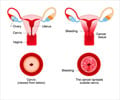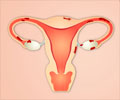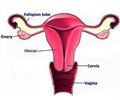About
Chronic pelvic pain may be defined as the pain occurring below the umbilicus that persists for at least six months. Pelvic pain is one of the common distressing complaints of females across the globe.
The pelvic region is the area lying between umbilicus to the groin in the front and between the buttocks at the back. It chiefly contains the organs of reproductive, urinary and digestive systems like uterus, bladder and intestines.
Chronic pelvic pain (CPP) is not a disease rather a symptom of illnesses such as Endometriosis, Pelvic Inflammatory Disease, Irritable Bowel Syndrome, Interstitial Cystitis or Diverticulitis.
Frequency of Pelvic Pain: It is seen that approximately 1 out of every seven women suffers from this painful condition.
Affected Age: The condition is more commonly seen in reproductive-aged women, around 26-30years of age.
Pelvic pain can be constant or intermittent. Constant pain is the outcome of a number of problems while intermittent pelvic pain is usually due to a specific cause.
The persistent pelvic pain can be a source of mental, physical and emotional distress and it can adversely affect the daily routine.
Dysmenorrhea is a term used to describe low anterior pelvic pain which occurs in connection with periods.
Causes of Pelvic Pain in Women
The causes of chronic pelvic pain are numerous. An assortment of gynecological, gastrointestinal and urinary conditions an lead to the onset of pelvic pain. Some of the important causes are listed here:
Gynecological Causes: Gynecological cause are believed to be the main cause of pelvic pain in about 20% of women. The important ones are as follows:

- Endometriosis- Endometrium is the inner most lining of uterine cavity. The presence of endometrial tissue at some other place outside the uterine cavity is termed as endometriosis. The tissue may be attached to ovaries, fallopian tubes, bladder or intestines. Endometriosis causes intense pain in pelvic region especially during coitus or menstruation. Apart from pain it may also lead to abnormal bleeding or even infertility.
- Pelvic Inflammatory Disease (PID)- PID is the infection resulting from sexually transmitted agent or organisms. It may affect uterus, ovaries and fallopian tubes. PID causes pain in the pelvic region and sometimes bleeding may be present.
- Vulvodynia- The pain occurring in or around vulva is known as vulvodynia. It is described as stinging or even burning pain in external female genitalia.
- Fibroids- Uterine fibroids are non-cancerous benign outgrowths in the uterine cavity. They cause cramps or sharp acute pain. The pain is usually worse in the menstrual period and during sex.
- Instability of Pelvic Joints- It is seen that during childbirth, ligaments stretch to facilitate fetal descent; as a result they tend to become loose and cause pain and discomfort in pelvic area.
- Pelvic Adhesions- Usually due toprevious surgery like Cesarean section or surgery on the uterus for its removal. These adhesions can sometimes cause excruciating pain in pelvic region.
- Ovarian Cysts- During ovulation ovaries release egg, but sometimes it is seen that instead of releasing egg, the follicle becomes filled with fluid and cause irritation and pain in pelvic area. This pain is localized in such conditions.
- Dysmenorrhoea- Dysmenorrhoea or painful menses is a condition where pain with cramps is felt by females during menstruation. It can be relieved by administering antispasmodics and analgesics.
- Ectopic Pregnancy- This condition does not cause chronic pelvic pain as it is more of an acute situation with pain in the pelvis. The pregnancy that occurs outside the uterus commonly in fallopian tubes is termed as ectopic pregnancy. It is a medical emergency and a life threatening condition and require active medical intervention. Usually pain starts on one side of the abdomen, after a missed period. It may be accompanied with slight spotting or bleeding. The tubes may burst and immediate medical help is required to save e patient’s life.
Other Causes: The other important causes of pelvic pain are associated with urinary, gastrointestinal systems or with muscles and nerves of pelvic area.
- Irritable Bowel Syndrome- It is an important gastrointestinal cause of pelvic pain. Irritable Bowel Syndrome or IBS is the abdominal pain occurring as a result of deranged bowel habit e.g. loose stools and increased bowel movements. Pain usually subsides with defecation.
- Interstitial Cystitis or Painful Bladder Syndrome- Bladder pain without any associated infection is termed as Painful Bladder Syndrome or Interstitial Cystitis (PBS/IC). The symptoms are increased frequency and urgency of micturition. Females suffering from PBS also experience lower abdominal discomfort and pelvic pain.
- Diverticulitis- A sac like protrusion is sometimes found in the colonic muscular wall. This is called diverticulum.. The inflammation of diverticulum is termed as diverticulitis. It’s important symptoms include pelvic pain, diarrhea, nausea and vomiting. It is an important cause of digestive system amounting to pelvic pain and discomfort.
- Fibromyalgia- The muscles of pelvic floor or pelvic diaphragm includes levator ani, coccygeus and connective tissues of pelvic area. The connective tissue, muscles and ligaments of pelvic floor are affected in fibromyalgia. Apart from pain, the affected females also experience generalized fatigue, headache and even mood disturbances.
- Neuropathy (Pelvic Nerve Pain)- Pelvic nerve pain is also an important cause of pelvic pain occurring in females.
Symptoms of Pelvic Pain in Women
Pelvic pain is the main symptom that can occur anywhere in the region – it maybe continuous and sometimes intermittent.
The persistent pelvic pain can be a source of mental, physical and emotional distress and it can adversely affect the daily routine.
An account of the associated symptoms of pelvic pain in females is as follows:
- Suprapubic pain, genital pain, rectal pain, pain in bladder region
- Coccygeal Pain- pain in tail bone
- Low backache
- Groin discomfort and pain
- Perineum discomfort and pain
- Discomfort in sitting position
- Reduced libido
- Urinary symptoms like increased frequency, urgency, hesitancy, burning micturition, Nocturia, etc.
- Depression and anxiety
- Pain during and after the sex

Diagnosis of Pelvic Pain in Women
Diagnosis of Pelvic Pain may require a thorough history and examination followed by blood tests, urine tests and an ultrasongraphy. Additional tests like CT scan maybe required.
Sometimes it is difficult to locate the exact cause of pelvic pain as a variety of conditions can be responsible for it.
The generally sought after diagnostic methods of the causes of pelvic pain are as follows:
History and General Physical Examination: Complete account of history and thorough physical check up of the pelvic region is highly important for assessing the cause responsible for the pelvic discomfort. Examination of lower backache, external genitalia and pelvic examination (internal assessment) are very crucial in finding the exact cause.
Laboratory Tests: The commonly recommended tests include urine routine and microscopic examination to find out any hidden infection, blood test for leukocyte count, tests to rule out sexually transmitted infections and pregnancy tests.
Pelvic Ultrasonography: Pelvic ultrasound is very significant diagnostic method for detecting pelvic masses, ovarian cysts, fibroids and endometriosis. Sonography is a highly accurate technique in making diagnosis of the causes of pelvic pain. A vaginal ultrasound probe maybe used besides the abdominal ultrasound.
Laparoscopy: In situations where it is difficult to rule out conditions like endometriosis or pelvic inflammatory disease, laparoscopy is done to find the exact cause. Laparoscopy can be done as a day procedure. A thin laparoscope with attached small camera is introduced in the patient’s abdomen via a small incision just below the umbilicus. Direct visualization is possible with this diagnostic technique.

Treatment and Prognosis for Pelvic Pain in Women
Unknown cause of the symptom of pain is first treated with analgesics and sometimes antibiotics whereas if there is known pathology the pain – it should be treated.
The pain related to pelvic region can be treated by following ways:
- Analgesics- They are also known as pain killers or pain relievers. They are employed in reducing pain and inflammation.
NSAIDs or non-steroidal anti-inflammatory drugs like ibrufen or aspirin have analgesics as well as anti-inflammatory properties.
- Antibiotics- Pelvic pain caused due to any underlying infection is well treated with antibiotic medication. The most suitable antibiotic is decided by the antibiotic sensitive tests.
- Antidepressants- Whether the patient is depressed or not, the treatment of chronic pelvic pain often requires the administration of antidepressants.
- Hormonal Medicines- They are given if the pelvic pain is associated with menstrual cycle. This adjusts the hormonal balance in the body.
- Muscle Relaxants- Spasmodic muscular pain may be relieved by the use of muscle relaxants. These relaxants effectively relax the muscles and reduce pain and spasm.
- Trigger Point Injections-Steroidal injections are used in treating myofascial abdominal wall pain. Anesthetic injections may also be used which make the area numb and reduced local inflammation.
- Physical Therapy- Application of different methods to reduce pain come under physical therapy like, heat, cold, pressure application or use of massages. Stretching exercises also prove to be effective in relieving pelvic pain.

Other Treatments:
- Acupuncture: This treatment is based on the belief that fluids flow via channels in our body. It involves the insertion of needles at specific points to relieve pain. One should always seek the services of a specialist and never do it on your own.
- Relaxation Therapy: Relaxation therapy calms down the brain and relieves both physical and mental stress. It is quite effective in reducing pain.
- Surgical Treatment: In cases, where adhesions are the cause of pelvic pain, surgery is done to remove adhesions. Once adhesions are removed, pain tends to subside.
- Counselling: Pelvic pain is not only as source of physical distress but also an emotionally traumatizing condition. It influences our relationships with others and causes mood swings. Counselling, proves to be beneficial in understanding pain properly and also ways to deal with it.
Prognosis of Pelvic pain in Females:
The prognosis of pelvic pain is quite unpredictable.
- In some patients despite all the tests the cause of pain may not be found.
- The pelvic pain arising due to vulvodynia, remains a mystery and difficult to treat.
- Pain occurring due to uterine fibroids get relieved after surgery.
- Once menopause commences the pain cause by endometriosis or uterine fibroids may diminish.
- The pain or irritable bowel or interstitial cystitis are also difficult to treat.
A Final Word:
Undoubtedly pelvic pain is a distressing and quite common condition met by women universally. It adversely influences a woman’s capability to work, her self esteem, her relationships with others and even her sexuality and sensuality. It can adversely affect the quality of life of a woman.














